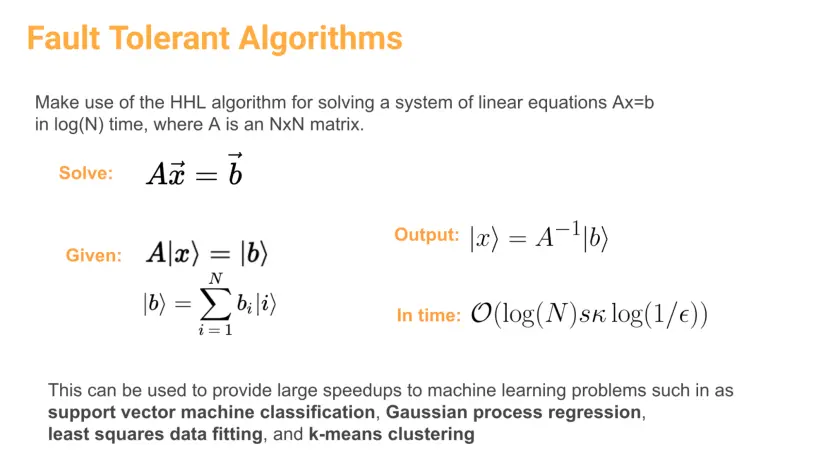The HHL Algorithm
The HHL (Harrow-Hassidim-Lloyd) algorithm is a quantum algorithm that was developed to solve linear systems of equations efficiently on a quantum computer. It was introduced by Aram Harrow, Avinatan Hassidim, and Seth Lloyd in 2009. Solving linear systems of equations is a fundamental problem in mathematics and has many practical applications in various fields, including physics, engineering, computer science, and machine learning.
The standard classical approach to solving a linear system of equations of the form Ax = b, where A is a known matrix and b is a known vector, involves methods like Gaussian elimination or matrix factorization. These classical methods have a computational complexity that can be polynomial or worse, making them inefficient for large-scale problems.
The HHL algorithm, on the other hand, is designed to solve linear systems of equations exponentially faster than the best-known classical algorithms. It leverages the unique properties of quantum computing to achieve this speedup.
But there are many disadvantages and limitations of the HHL Algorithm.
- The Solution of Ax=b is obtained only as a Quantum State. So it can only be used as a subroutine in another Quantum Algorithm. And if we try to extract the explicit solution from the Quantum State it takes an Exponential Number of Steps.
- The matrix has to be Hermitian and s-sparse
- State Preparation requires Exponential Effort
- The Matrix A needs to be well conditioned. The condition number 𝜅 of a Hermitian matrix is the ratio of the largest to smallest eigenvalue magnitude.

